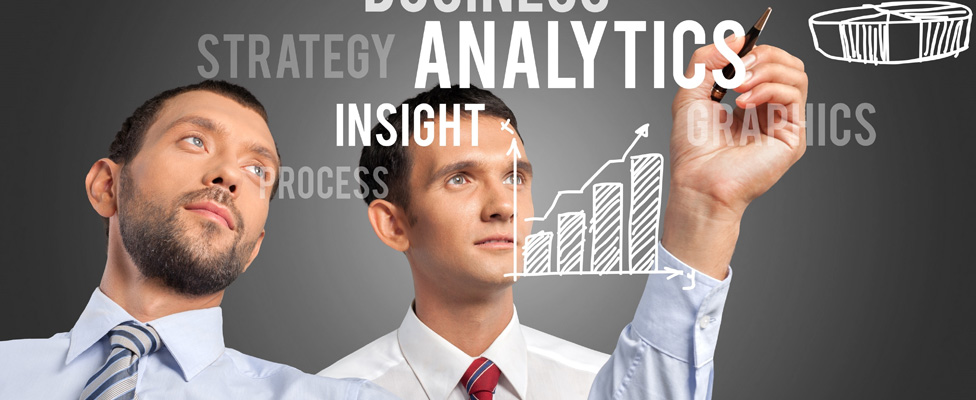
Three Focal Points for Data Analytics in 2021
How do data and analytics leaders prepare for 2021? Here are the three trends to focus on.
- By Matthew Scullion
- January 25, 2021
Last year took disruption to a new level. It's not necessarily news that enterprises are disrupting and modernizing their data analytics strategies, adopting technology and tools that enable them to harness data from a growing number of data sources and glean actionable insights. Now add to the mix a global pandemic -- the ultimate disruption. As companies try to adapt, the demand for data and insights has increased at warp speed.
Now more than ever, stakeholders need to know what is happening in a business operationally, how the business is performing, and how events are affecting the level of customer service. Access to quality data analytics can help ensure that an enterprise stays strong during -- and after -- COVID-19. After the uncertainty and seismic market shifts of 2020, how do data and analytics leaders even begin to prepare for 2021? Here are the three trends they should focus on as we begin the new year.
Trend #1: Self-service as a catalyst for accelerated digital transformation
Prior to the pandemic, modernizing a data environment was a steady and deliberate process driven by IT and data teams. They prepared and planned how to ensure faster time to insights within their data infrastructure while working to keep disruption to existing business processes to a minimum. COVID-19 shook things up and accelerated the need to modernize, while simultaneously wreaking havoc on budgets and resources.
With this urgency and fewer resources for IT and data teams, data democratization and self-service have become an imperative. Now, enterprises need to provide data and the means to transform data to more business users to help them rapidly solve business problems inside their departments. IT can no longer be a bottleneck if businesses hope to use data to make timely, fact-based decisions. Both IT and business stakeholders need cloud-native solutions that are intuitive and enable easy onboarding for new users.
No data democratization can exist without a strong data governance policy that allows data access to business users while still meeting the security and compliance requirements of the enterprise.
Trend #2: Investing in data transformation to accelerate analytics-ready insights
With the explosion of data sources and data inside large enterprises, data teams simply can't move fast enough. According to a recent IDG Research MarketPulse survey, enterprises spend nearly half of their time (45 percent) wrangling and preparing data. It takes about a week to prepare data for a typical analytics project. As a result, 97 percent of enterprises surveyed are looking for ways to speed up the data transformation process to accelerate analytics-ready insight.
Data transformation in the cloud -- reducing the time it takes to join together siloed data, denormalize it, enrich it, and apply business logic -- helps enterprises get to insights faster. As external factors contribute to pressure on budgets and resources, transforming data with an ELT solution will help data teams do more and require fewer resources to do it.
Analytics-ready data in minutes or hours with cloud ELT helps make businesses more scalable and flexible; more cost-efficient; and better prepared to leverage data in advanced use cases involving IoT data, machine learning, and artificial intelligence that can predict what comes next and how to move forward. Enterprises should aim to invest in cloud ELT solutions to provide faster time to insights within their business while keeping pace with the influx of data sources needed for actionable analysis.
Trend #3: Adopting the lakehouse for data analytics
We've long talked in terms of a data lake or a data warehouse and their different benefits for analytics. Now, data analytics is moving toward a unified environment that blurs the lines between a traditional data lake and a data warehouse. Modern organizations are embracing a new data management paradigm: the lakehouse.
When moving to the cloud, companies no longer need to grapple with an either/or decision between a data warehouse, a data lake, or even to establish separate-but-equal entities in the cloud. The lakehouse architecture is the best of both the structured and semistructured world.
A lakehouse enables you to store all data in a single location where you can apply best-in-class streaming, business intelligence (BI), data science, and machine learning capabilities. A lakehouse gives enterprises easy access to the most recent data; access to all data as needed to perform analytics rather than what only lives in a data warehouse; and shareable, analytics-ready data sets that enable advanced analytics models and democratize data for data engineers, data scientists, and other users across the business.
The lakehouse is only possible with the help of a strong data integration and transformation engine that can not only access various data sources but also orchestrate the data flows and transformations across different data types. Transformation enables one-stop access to analytics-ready data, and it enables data engineering teams to easily productionize data science pipelines via self-documenting transformation workflows across a variety of virtualized tables.
Approach 2021 Ready for Change
The one thing we can be sure of in 2021 is that enterprises will face more change. Insight from data can help us find direction and solutions, so the more we can enlist modern tools and technology to quickly help us gather, transform, and analyze data, the clearer the path will become.
About the Author
Matthew Scullion is the CEO of Matillion. In his career, Scullion has worked in commercial IT and software development for over 15 years at a number of British and European systems integrators before founding Matillion, a leading provider of cloud data transformation software. You can reach the author via LinkedIn.